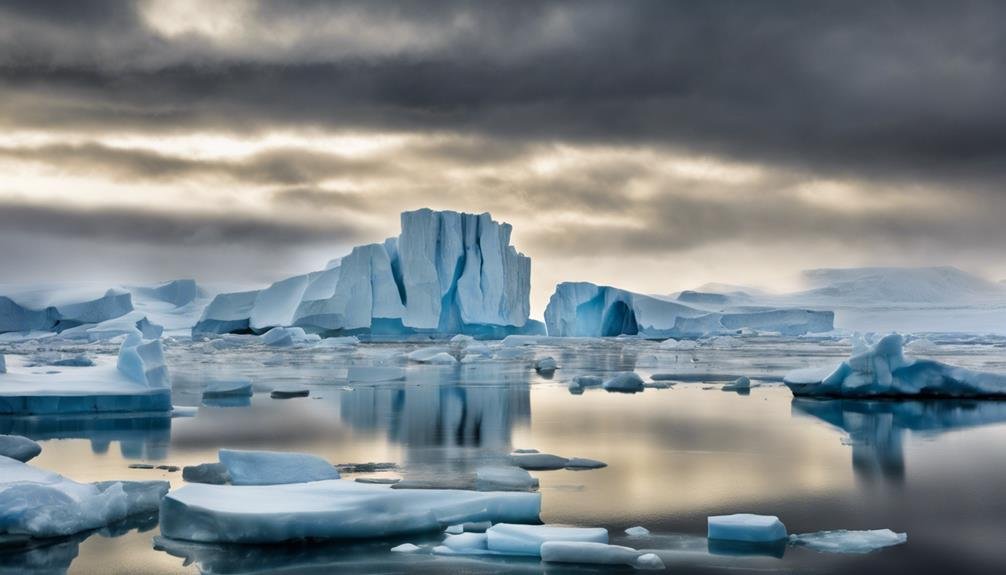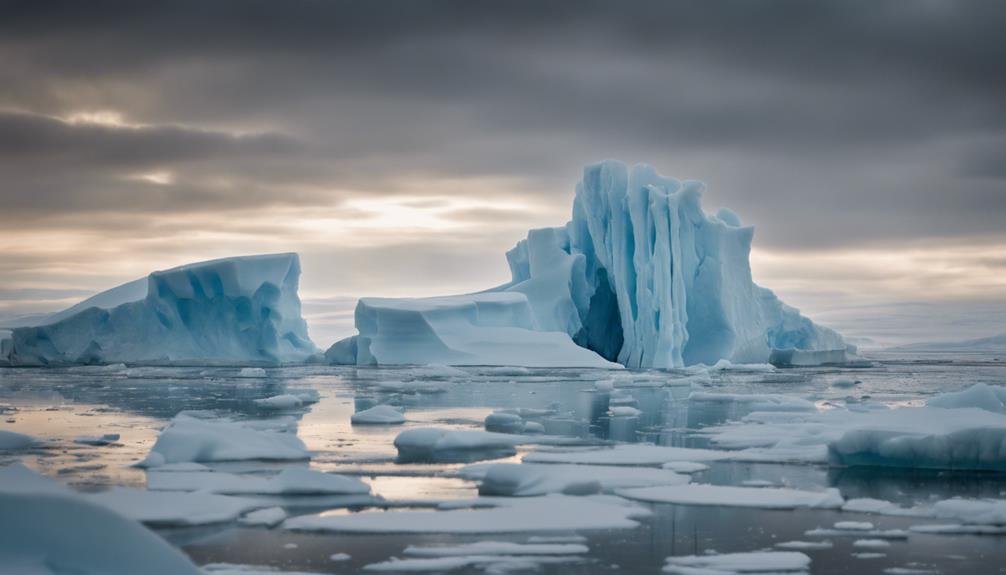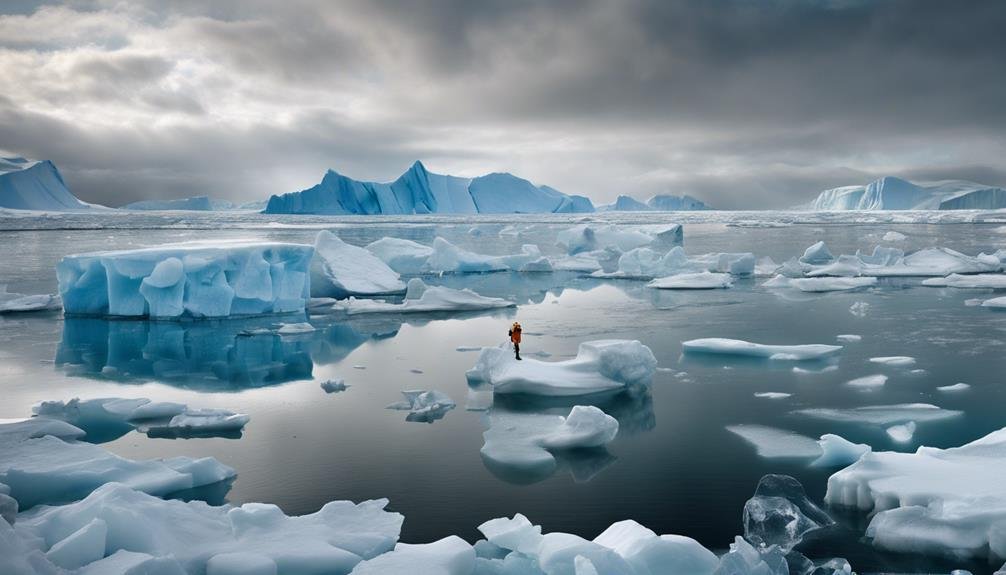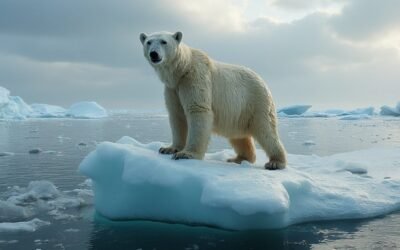What mysteries does the Arctic climate hold? This enigmatic region, characterized by its extreme conditions where the sun either bathes the landscape in continuous daylight or leaves it in prolonged darkness, challenges the limits of life on Earth. At the heart of these extremes, the Arctic climate reveals a complex interplay of geographic and atmospheric forces.
The Arctic, a vast and icy frontier, stands as a testament to the Earth’s diverse climates. Its unique geographical features, from expansive ice sheets to open seas partially covered by sea ice, play a crucial role in shaping its weather patterns. The flora and fauna of the Arctic have adapted to thrive in conditions that would be inhospitable to most life forms.
With the planet undergoing significant climatic shifts, the Arctic’s influence extends far beyond its frozen borders, affecting global weather patterns and ecosystems. This overview serves as an entry point into the intricate dynamics of the Arctic climate and its significance in the broader context of global environmental change.
Key Takeaways
The Arctic climate is complex and changing, significantly influencing global weather patterns. Observations over time show considerable changes, and current trends indicate a rapidly evolving Arctic region.
Scientific research and advanced technology are crucial for understanding these changes and predicting future climate conditions more accurately. Despite uncertainties, the Arctic plays a vital role in Earth’s environmental balance.
Immediate action is necessary to mitigate climate change impacts and protect this important region for future generations.
Key Takeaways:
- The Arctic climate is complex, with significant changes observed over time, highlighting a rapidly evolving environment.
- Advanced scientific research and technology are critical for accurate climate predictions in the Arctic.
- The Arctic is fundamental to Earth’s environmental health, necessitating immediate efforts to address climate change impacts.
Historical Climate Patterns and Changes in the Arctic
Recent Acceleration of Climate Change in the Arctic
Historical climate data and ice core samples from the Arctic reveal a marked acceleration in the region’s temperature changes and ice melt over the past few centuries. This rapid change includes significant declines in Arctic sea ice, pronounced temperature trends, and noticeable glacial retreat. The increase in permafrost melting further highlights the dramatic transformations occurring in the Arctic’s physical landscape.
Link Between Arctic Amplification and Extreme Weather Events
Studies of the polar vortex through climate models have indicated a connection between Arctic amplification and the occurrence of extreme weather events in temperate zones. This relationship points to the widespread impact of climate variability, both within the Arctic and in more distant locations. The role of Arctic amplification in driving temperature trends and accelerating ice melt is increasingly evident from historical records.
The Urgency for Scientific Analysis
The pace and intensity of changes in the Arctic, while rooted in natural climate variability, have increased significantly. This situation underscores the need for detailed scientific analysis. Synthesizing historical data, from ice cores to temperature records, offers critical insights into the factors influencing these changes. Understanding the significance of Arctic amplification, extreme events, and climate variability is key to comprehending the current and future state of Arctic climates.
Current State of Arctic Weather and Climate Systems

Arctic Temperature Surge
The Arctic is undergoing a dramatic increase in temperatures, a phenomenon far exceeding the warming rates observed globally. This region is now warming more than twice as fast as the rest of the planet, leading to significant environmental transformations. The melting of sea ice and glaciers is a direct consequence, reshaping the Arctic landscape and its ecosystems in profound ways.
Shifts in Precipitation and Seasonal Patterns
Changes in precipitation are evident across the Arctic, with some areas experiencing more rainfall, which in turn, contributes to extreme weather events. These shifts aren’t uniform, highlighting the complexity of climate impacts in this region. The alteration in seasonal cycles also stands out, with longer summers and shorter winters affecting everything from the duration of polar nights to the timing of the midnight sun.
Impact on Polar Cyclones and Global Climate
The behavior of polar cyclones in the Arctic has seen changes, indicating possible wider effects on global weather patterns. The reduction in sea ice, aside from influencing local flora and fauna, plays a significant role in the broader climate system, affecting ocean currents and global temperature regulation.
Urgency for Climate Resilience
Addressing the rapid changes in the Arctic demands immediate action towards building climate resilience. The ongoing transformations highlight the critical need for a deeper understanding of these changes and proactive measures to mitigate their impacts. The delicate balance of the Arctic environment is at stake, emphasizing the urgency for concerted efforts in combating climate change.
Impact of Arctic Climate on Global Weather Patterns

Influence of Arctic Oscillation and Polar Vortex on Weather Patterns
The Arctic Oscillation and Polar Vortex significantly shape the climate by altering the jet stream’s position and intensity. This, in turn, dictates weather conditions across the Northern Hemisphere, leading to variations in temperature and precipitation patterns. The strength and location of these phenomena can result in mild winters in one region while causing severe cold spells in another.
Impact of Albedo Feedback on Global Temperatures
The phenomenon of Albedo Feedback plays a critical role in the Earth’s climate system. As sea ice diminishes, the darker ocean waters absorb more sunlight, leading to an increase in global temperatures. This reduction in sea ice not only accelerates Arctic warming but also contributes to a broader pattern of global climate change by influencing oceanic and atmospheric temperatures.
Teleconnections and Their Role in Extreme Weather Events
Teleconnections represent the interconnectedness of weather patterns across vast distances. The warming of the Arctic has profound effects on atmospheric circulation, creating patterns that can lead to extreme weather events thousands of miles away from the Arctic. These teleconnections are responsible for unusual temperature swings, heavy rainfall, or prolonged drought conditions in regions far removed from the Arctic Circle.
Understanding these dynamics is vital for developing accurate climate models that can predict future climate scenarios. By recognizing the complex interplay between Arctic warming and global weather patterns, scientists and policymakers can better prepare for and mitigate the impacts of extreme weather events on ecosystems and human societies.
Scientific Methods and Technologies for Arctic Climate Research

Arctic Climate Research: An In-Depth Exploration
The intricate relationship between Arctic warming and global weather patterns demands a comprehensive understanding, achieved through advanced scientific methods and technologies. This exploration into Arctic climate research reveals the tools and approaches scientists use to unravel the complexities of the Arctic environment.
Satellite Observations: A Window to Ice and Atmosphere
Employing satellite observations is critical for monitoring changes across the Arctic. These eyes in the sky meticulously track variations in ice cover, offering insights into shifts in atmospheric circulation patterns. This method stands as a cornerstone in understanding the broader impacts of Arctic changes on global climate systems.
Climate Models: Predicting the Future
Climate models play a pivotal role in anticipating future climate scenarios. By integrating vast amounts of data, including satellite observations, these models project the potential trajectories of ocean currents and atmospheric changes. This predictive power is invaluable for strategizing against the impacts of climate change.
Field Expeditions: Ground Truth in Arctic Research
Field expeditions provide the essential direct measurements and samples required for a grounded understanding of the Arctic. Researchers collect ice cores, offering windows into past climates, and study glacier dynamics, crucial for predicting future changes. These hands-on investigations are key to decoding the mysteries of permafrost thawing and its implications.
Remote Sensing: Keeping an Eye on Large-Scale Changes
Beyond satellites, remote sensing technologies offer another layer of monitoring, especially useful for observing permafrost thawing over vast areas. This method enhances our grasp of large-scale environmental shifts, contributing to a holistic view of the Arctic’s changing landscape.
Data Analysis: Weaving Together a Complete Picture
The role of data analysis can’t be overstated in Arctic climate research. Through advanced computational techniques, scientists synthesize information from varied sources, including ice core analysis, to construct a comprehensive understanding of the Arctic’s current state and its potential futures.
This integrated approach, utilizing a diverse array of methodologies, equips scientists with a detailed and nuanced perspective on the Arctic climate. The resulting insights not only deepen our understanding of this critical region but also inform our global response to climate change.
Future Projections and Uncertainties for the Arctic Climate
Rising Temperatures and the Melting Ice Narrative
The Arctic is on the frontline of climate change, experiencing dramatic shifts that could reshape its landscape and impact the globe. The forecasted increase in temperatures is expected to accelerate the melt of ice and glaciers. This phenomenon not only contributes to rising sea levels but also affects the global climate system. The loss of ice exposes dark water surfaces that absorb more sunlight, further warming the planet—a process known as the albedo effect.
Permafrost Thaw and Methane Release
Another critical concern is the thawing of permafrost, a frozen layer beneath the surface that traps organic materials and methane. As temperatures rise, this layer begins to thaw, releasing methane into the atmosphere. Given that methane is a potent greenhouse gas, its release could significantly amplify global warming, creating a cycle of warming and thawing.
Precipitation Changes and Ocean Acidification
The Arctic’s climate is also expected to undergo significant shifts in precipitation patterns. These changes, alongside the warming temperatures, could lead to more frequent and intense extreme weather events. Furthermore, the acidification of ocean waters poses a severe threat to marine ecosystems. The increasing acidity disrupts the balance of marine life, potentially leading to shifts in biodiversity and impacting species dependent on these habitats for survival.
Interconnectedness and Uncertainties
The interconnected nature of these elements—the ice-albedo feedback, permafrost thaw, and changes in the marine ecosystem—presents a complex puzzle for scientists. Predicting the exact outcomes of these interconnected processes is challenging due to the intricate dynamics of the Earth’s climate system and the uncertainties surrounding human actions and natural feedback mechanisms. These uncertainties highlight the need for adaptable and resilient strategies to mitigate and adapt to the evolving Arctic climate.
Frequently Asked Questions
What Is the Climate Like in the Arctic?
Q: What are the climatic conditions in the Arctic?
A: The Arctic experiences significant temperature variations, characterized by the phenomena of the polar night and the midnight sun. These conditions lead to changes in ice coverage and permafrost thawing. The region’s wildlife has adapted to these harsh conditions. Additionally, the lifestyle of indigenous peoples and the patterns of ocean currents are directly impacted by the Arctic’s unique climate.
What Is Arctic Climate for Kids?
What Is the Arctic Climate?
Q: What kind of climate does the Arctic have?
A: The Arctic climate is characterized by cold temperatures, polar animals, extensive ice sheets, and significant shifts between extreme daylight in summer and complete darkness in winter. It also includes discussions on traditional lifestyles, the impacts of climate change, varying types of vegetation, and the cultures of indigenous peoples.
What Are the Main Conditions in the Arctic?
Q: What are the main environmental challenges in the Arctic?
A: The Arctic faces several critical environmental challenges, which include significant ice melt, polar darkness, and permafrost thaw. These phenomena lead to consequences for wildlife adaptation, glacial retreat, and changes in sea ice. Additionally, they have profound impacts on indigenous lifestyles, alter ocean currents, affect the carbon sink, and influence climate feedback loops.
Why Is the Canadian Arctic so Cold?
Why is the Canadian Arctic so cold?
The Canadian Arctic is extremely cold due to its geographical location near the North Pole, which results in long periods of darkness known as polar night during winter months. This area is also affected by ocean currents that bring colder water from the Arctic Ocean, further lowering temperatures. The ice albedo effect, where ice reflects sunlight back into the atmosphere instead of absorbing it, keeps the region cool. Additionally, wind patterns in the Arctic contribute to its chill, as they can isolate cold air masses in the region. The presence of permafrost acts as an insulating layer, trapping cold temperatures in the ground. Collectively, these factors make the Canadian Arctic one of the coldest places on Earth.
Conclusion
The Arctic’s climate is a multifaceted and evolving entity that plays a critical role in shaping global weather phenomena. Through the lens of historical records, we’ve observed notable shifts, and current data points to a swiftly transforming Arctic environment.
The integration of scientific methods and cutting-edge technology is indispensable in enhancing our comprehension and improving the accuracy of future forecasts. Despite the presence of uncertainties, it’s undeniable that the Arctic holds a key position in the Earth’s ecological equilibrium.
There’s an urgent need for informed actions aimed at counteracting the effects of climate change and safeguarding this vital area for the generations to come.


